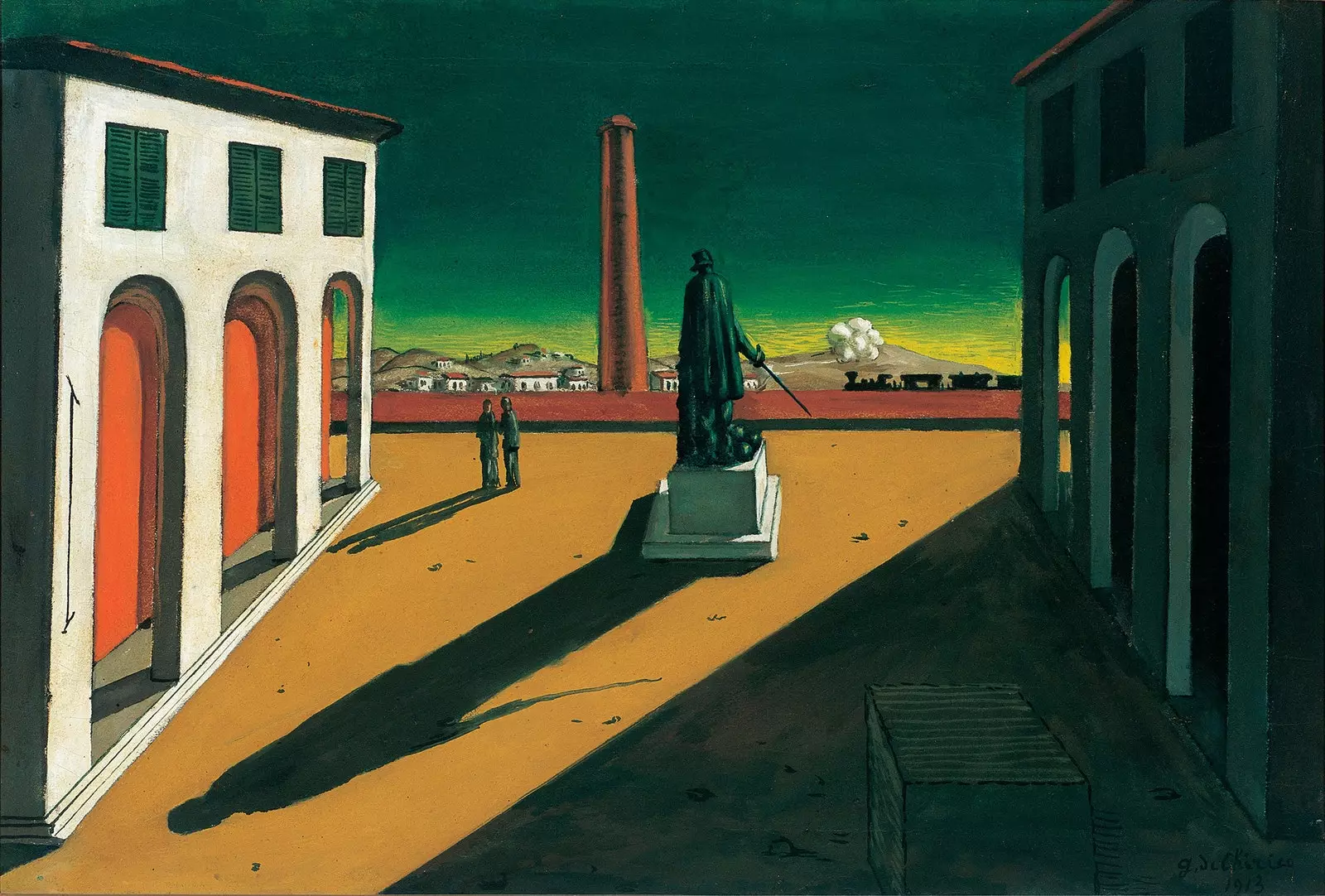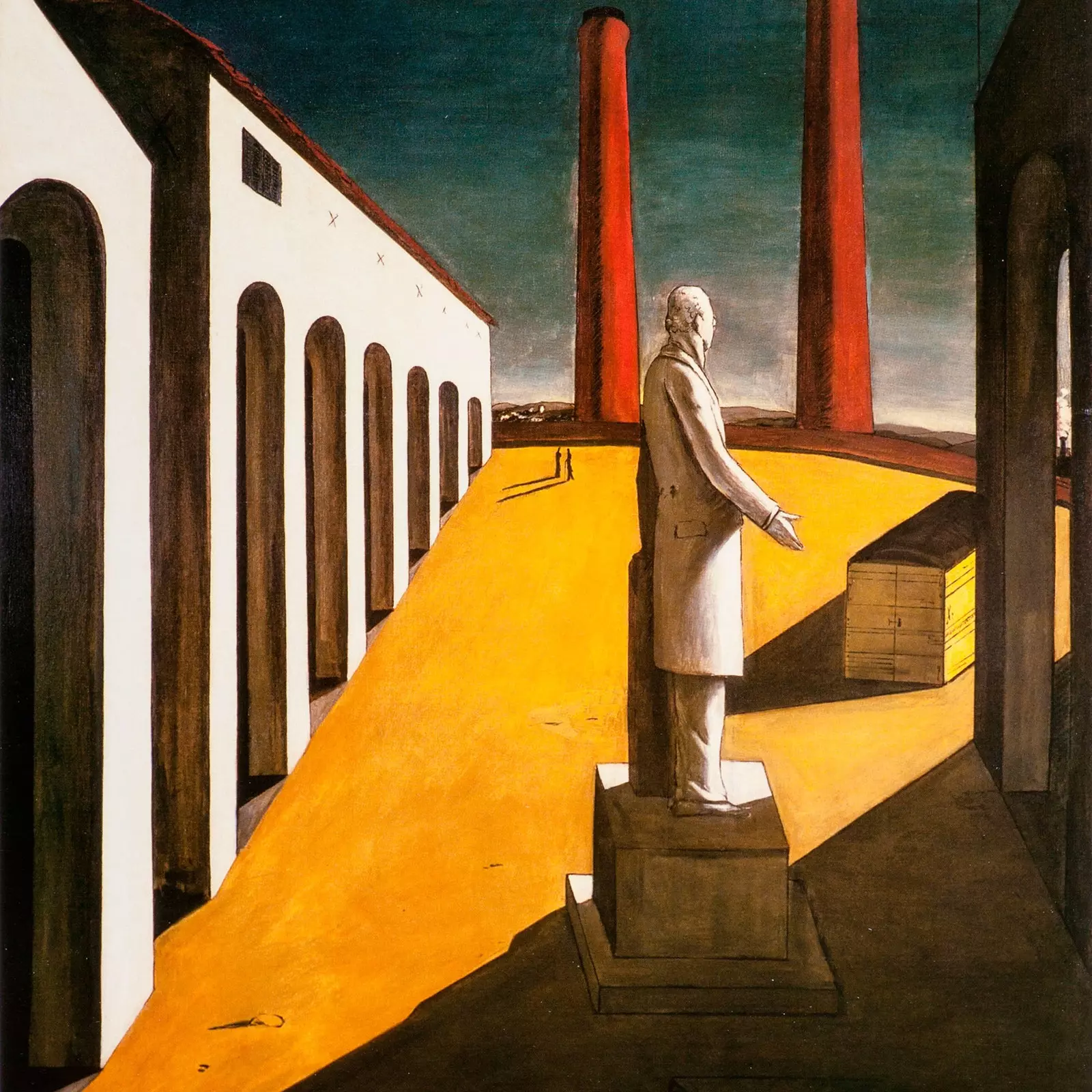
'Square', by Giorgio de Chirico
A deserted street causes a feeling of unreality. It leads to the dream, to science fiction or dystopia. Also to reflection. Vitruvius already pointed out that architecture and language respond to the same moment in the evolution of the human being. Emptiness is silence, and silence favors speech over noise.
In the XV century, in Urbino, various scenes depicting the ideal city. They are urban views in which they rise circular buildings, porticoes, triumphal arches and temples. The perspective imposes order and balance in a place that is just an idea. As in an architectural project, the absence of figures indicates that the image does not belong to reality.
looking at these works restlessness is hard to suppress. The reaction leads to consider them scenarios that await the arrival of the actors, because it is unthinkable that the streets are empty in broad daylight. The agora was the core of the Greek polis. The Roman forum was surrounded by buildings intended for trade, administration and worship. The depopulated is part of the rustic. Urban is hustle and bustle. Solitude contradicts an environment that responds to meeting and sharing.
Giorgio de Chirico he departed from this tradition in the architectures he painted from 1911. he had grown up in Greece. In Italy he followed in the footsteps of Nietzsche, whom he admired. "All the nostalgia for infinity is revealed to us behind the geometric precision of the square", said the philosopher. The porticoes of Turin revealed the meaning of this statement.
The painter settled in Paris. In his studio he fixed the image on a series of canvases that gave shape to a new genre: metaphysical painting. The space is always the same. Two empty arcades flank an area of land. The first floor windows are closed. nightfall The shadows reinforce the dreamlike effect.

Ideal city, Urbino, 1480 - 1490
In the work he painted in 1913 it distinguishes a town on the horizon. The chimney indicates the existence of a factory. A freight train is approaching. Two men have a static conversation on the edge of the square. Above them stands a statue. The monument commemorates a hero with a sword. In the foreground another pedestal stands empty. What deserves to be remembered is absent.
Nothing happens. Everything is enigma. The hero's shadow covers the pavement. He has his back turned, so it is impossible for us to know what his feat was. Time, suspended, does not advance. The train, the only sign of activity, runs along the railway line and moves away. Life unfolds elsewhere, outside of painting.
De Chirico felt, like Dürer, born under the sign of Saturn. He was melancholic. He considered that this state of consciousness allowed him to penetrate beyond appearances and contemplate the mystery that was hidden behind reality. For him, the metaphysical resided in the houses, the squares and the gardens, the ports and the stations. The enigma could not be solved from logic, but through the intuition. The creation involved the same work as that of the diviner in an oracle.
To do this he recomposed the fragments over and over again: a tower, a statue, a classical sculpture, a clock, a box. As in the tragedies of Sophocles, the architectural space was a framework for reflection and revelation.
He wrote: "We who know the signs of the metaphysical alphabet we know what joys and pains are hidden inside a porch, on a street corner, or even in a room, on the surface of a table, between the sides of a box.”
The key to nonsense, to the absurd that runs through an empty city, it is in the gaze of the one who walks through it.
Plaza, by Giorgio de Chirico, is exhibited in the interwar art rooms of the Museum of Fine Arts in Buenos Aires.

The enigma of a day, 1914
